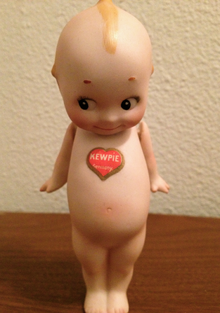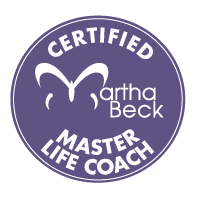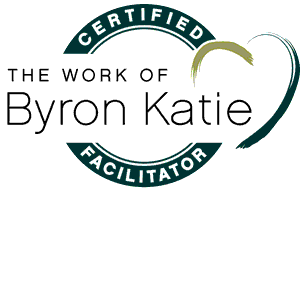What my Kewpie Sisters Taught Me About The Mojo of Jomo

I just spent the weekend in the Kansas City celebrating a landmark birthday (one with a zero in it), along with a dozen other women who are exactly my age. Hint: we’re all from the first wave of Baby Boomers. Okay. Seventy. We call ourselves the Kewpie Sisters. Because that is what we are, alumnae of Hickman High School, home of the Fighting Kewpies. For real. Would I make this up?
We gathered smack dab in the middle of the flyover zone. The group of women who came together was as diverse as this country, held by a common bond of caring that is far stronger than “the great divide” we keep hearing about. But we didn’t have time to talk about that. We had better things to talk about.
Mostly we laughed and shared our common memory banks to reconstitute teenage versions of ourselves. Then we reflected back, mining the experience and offering up the perspective that we have collected in the last 50-plus years. What showed up was something I believe is called Wisdom in some people’s minds, including my own. At this time of life, it’s indescribably satisfying to be able to share the take-aways from life’s apparent setbacks and challenges. And I always love honoring my curiosity about what I don’t know (which, when it includes the mystery of life, is a whole lot).
Gone were the social roles, the need for acceptance that seems to come with the teen years. My own strategy way back when was to join every activity and choir and group available except women’s sports, and I’m not even sure we had those teams in the Stone Age. But my major motivation was this: I just didn’t want to miss out on anything.
This habit hasn’t changed all that much since my adolescence. Twenty years ago a friend diagnosed me with FOMS, the “fear of missing something.” In recent years the acronym has morphed into the pop psych meme FOMO, or Fear of Missing Out. So my ears perked up when my friend Vicki talked about being in a state of contentment, being satisfied with her “ordinary” life. This is a woman who has raised four children who are global citizens, who has traveled extensively to keep in touch with them for many years. So when she mused that she was done with travel it got my attention.
I still have a few airline miles to cash in and a few travel goals that will keep me busy as long as I’m fit enough to pursue them. BUT, I completely resonated with her description of a satisfied life. More and more, I’m opting out of things. It’s been a gradual process, hardly noticeable except inside myself. I started to see that often when I choose to not slip into the loop of doing or the belief that I should do more, have more, be more…my mind settles down. I breathe. I watch the birds. Or the trees. I move slowly, like the “old person” I never wanted to become. And it’s blissful. How could I have ever known, with all my joining and searching and moving around, about the surprising quiet joy of this time of life? Ironically, in my determination to not miss out, I’ve been missing something far more subtle and sweet.
Mojo of JOMO. The Joy of Missing Out. The name came to me at the reunion. And then, returning home, Vicki sent me a link to a blogpost referring to another forty-something’s post on this same topic from a couple of years ago. So I guess Baby Boomers don’t always get to be first. As a matter of fact, perhaps this is the great learning of what I’m claiming as the True JOMO Years. Finally, at long last, we get to miss out on being first, the leaders, the trendsetters and rule breakers. It’s about time. JOMO to me includes the relief of giving up all old identities, including that one.
Several questions and wonderings arise. What did I actually miss when I was so busy strategizing how to not miss out?
A life lived with openings for whatever shows up, comes the answer.
There’s so much to be gained when I’m not busy chasing what I might be missing. What new openings are created when I don’t do, when I don’t fill my time with all the tantalizing offerings before me? I get curious.
Today a friend posted these words by the 87 year-old sage Ram Dass, one of the respected mentors of my generation: “Aging has its own beauty. It is a beautiful stage for doing inner work. You have a chance to not be so dependent on social approval. You can be a little more eccentric. You can be more alone. And you can examine loneliness and boredom instead of being afraid of them. There is such an art and a possibility in aging…”
Once again, he nailed it.
Image by Scottdoesntknow [CC BY-SA 3.0], from Wikimedia Commons
Singing For Life

This spring I returned to sing in a choir of my Homies called Jubilate!
It’s a different experience than chanting as a yogic practice. But it’s a practice still, singing harmonies with these women of all ages and stripes, songs about heart, about spring, and about what it means to stand up for what matters. This practice reminds me of what’s important, especially right now, when times can be pretty dark.
Last month we serenaded the local Marchers for Life, where about a tenth of the population of my town showed up. When we started I barely managed to squeak, flooded as I was by the tears and the beauty of all the layers of past and future that came together in the faces I saw. When I got home, it turned into a poem of impressions, a poem that could remind and inspire me. For Life. For Love. For these times.
One Foot In Front of the Other, and Lead with Love!
A choir of 30 women, named for jubilation,
We sing, sway, clap, and dance to the river of determined
Marchers for our Lives.
Arms linked, signs as varied
As their new bodies, their life-worn bodies, and in-between.
Pink flowers with the names of the fallen.
A skinny tween-aged girl carrying her advice:
Use Ur Indoor Voice. Don’t Yell at Us.
The songs, the river, the people keep flowing,
Never Turning Back.
We are the Ones We’ve Been Waiting for, we sing.
Won’t Let Nobody Turn us Around,
Mind holds a prayer:
May I remember this.
The constant constant constant beat
The never-ending flow of
The pulse that holds it all. The refrain:
It is time now, and what a time to be alive
In this Great Turning we shall learn to lead in love
Following the Glimmer, Not the Glitter

Midwinter at my home means a fire in the wood stove, a stew or soup bubbling on top, and a hover of crows cawing and landing in the meadow behind my house. Fitting subjects for contemplation. Like a crow, I’ve spent a fair amount of my life grabbing the next shiny object. I’ve collected experiences, workshops, credentials, books, and teachings like any good spiritual materialist. No regrets. Sometimes there’s been a huge pay-off for my curiosity, and sometimes I’ve gotten myself in some pretty tight situations. All of the resulting course corrections have taken the form of a learning curve. But at this stage of life, something a bit more subtle is operating.
Instead of grabbing onto the glitter, I’ve been leaning with curiosity into the glimmer and also suggesting my clients learn the difference.
When I get a little quiet with myself, my mind begins to imagine all the exciting and glittering futures it could create. This is when catchy YouTubes and online classes take me right into the sink hole. Next I wonder where the time has gone and how I’ll ever find the time to read the next self-help or spiritual book. And whatever time I’ve scheduled for writing or self-reflection is over. Carpool time, dinner time. Once again the taste for glitter has taken over.
But…when I remember that I’m not a crow, that I have a choice of where to put my attention, I’m more likely to spot a time-sink wormhole and bring myself back to what truly soothes and uplifts me. I’m more able to listen for something else, for a slight uplift in my body. If I slow down and look, there’s sometimes a cinder left from the past, some longing or inner curiosity. I can ask my heart to find it. Remembering the fire I built to keep away the chill, I can blow on the glimmering coal.
Staying curious, I watch for the glimmer to grow. Sometimes a slow, steady flame is ignited, and sometimes it’s an ember that dims and becomes an ash. I notice where it sparks, find some appropriate kindling by taking the next step. Only that one. After that I watch with curiosity, see what happens next, what resonates in the heart and the gut as true. After that, I keep it simple. I take the next small step that occurs to me.
I continue to watch, find a little piece of kindling, gently blow. On and on. Keeping it simple, I watch for life to show me the way. Then perhaps I sign up to sponsor that child in Nepal; perhaps I make some calls to a policy-maker, perhaps I take up tango or salsa.
It’s a subtle art, much less dramatic and stimulating than the shiny object approach, but instead of being stuck in tight places of my own creation, instead of being over-committed to everyone else or to the wormholes competing for my attention, over time I have a glowing life that sends new sparks and glimmers and offers new possibilities. But, best of all, I have a place to warm my hands.
The Lingering Gift of the Flu

I’m just emerging from the profound depths of this 2018 flu. I’ve developed a battalion of illness-fighting forces over the years, and it’s been decades since I actually experienced the full ride. But this month the little virus buggers wanted to set up shop, and they had their way with me.
While I was fighting them back there was struggle and stress. But then I remembered to ask one of my favorite questions of myself: How might this be a good thing? “It’s over. Give up the fight,” came an answer. After that, such a deep surrender. An opening. Peace. The mind stopped its incessant solving and strategizing. I simply couldn’t think that anything needed (or even could) be done. There were no appointments to be keep. No calls that needed to be made. No battles to be fought (or thought).
And what was left was breath, silence and spaciousness. The body had aches, fevers, coughs. Yes. And I can’t say that it was pleasant, but some other part of me could see that this existed inside something else, something vastly deep and powerful. Something that I could trust to either kill me or heal me. Suddenly nothing about it was personal.
I was already aware that sometimes these viruses take no prisoners and make no sense. So the breakthrough surrender wasn’t like a magical New Age carpet ride of positive thinking. I’m old enough to find evidence of my own ultimate fate all around me. A woman I know died of the flu three or four years ago. She was in her late fifties, fit and full of life force, on her way to Hawaii with her first grandchild and her children. There was no sense to it.
During the worst part of the flu, I remembered her. And instead of fear I experienced a deep understanding of my own powerlessness in the face of the most mysterious of forces. Without the words to frame it, there I was (or wasn’t) again. Simply a deep and powerful state of surrender and vast space.
It’s been a couple of weeks since this realization, and now I feel a lot like I did during my pregnancies. Once the morning zest (aka coffee) wears off, the tiredness comes…and goes…and moves around. I’m focused on catching the old habit of “pushing to overcome,” because I have somehow believed that this is the same as thriving. I don’t want to lose this new perspective.
There’s a different sense of things now, just at the edge of the fatigue. Something big, ineffable, irrefutable. A softness. A deep willingness to trust in the way of things.
It’s not altogether unfamiliar; it’s a way of being and living that I have sensed around the edges before. I’ve used words in an attempt to describe it. And I’m using words now. But ultimately words are no match for the peace. It’s an experience. And that has no words.
What’s left of the flu is a felt sense that I used to call fatigue. But now it feels more like gratitude.

